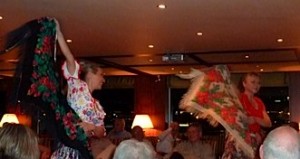
Gypsy dancers put on an outstanding performance on board, replacing the Vienna Concert which we had to cancel in order to escape the flood.
.
We have found that Uniworld is very good at being flexible and having not only Plan B but also plan C, D, E & F and does a good job of execution to ensure the best possible passenger experience. Once the river peaks, it can go down really fast, several meters in a day.
Horse Racing & Archery From Horseback
There is a big annual festival going on today and tomorrow. The highlight is the horse racing around Hero’s Square. When we visited yesterday, they were hauling in the dirt for the horses to run on and also make for a little softer landing for any unseated riders. Both yesterday’s and today’s guides have children on horseback and were cheering for “their horse.”
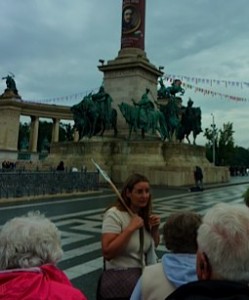
Our guide has recently taken up horseback riding, a dream she had been denied growing up before the Velvet Revolution
Each town is allowed to enter it’s horse and rider and there is a double elimination competition. One of the boys was competing in Archery From Horseback, which is a Hungarian specialty. The Hungarians love their horse riding traditions which are thousands of years old. The Soviets banned horse competitions, seeing them as wasteful. Now, since the Velvet Revolution of 1989, the horse riding culture is being brought back and people are embracing it universally. Yesterday’s guide is a woman in her 30’s who is now realizing her childhood dreams of horse riding. City dwellers can rent horses by the hour or day or have partial or full ownership with boarding expenses.
St Andreas, Artist Colony & Escape From Soviet “Block” Housing
The Soviet building program from 1945 to 1989 consisted of building “Block” housing.
These are 8 to 12 story tenement apartment buildings. They are about 50 meters or 450 square feet, made of concrete and all the same. They built about 800,000 units in Budapest, which has about 2.5 million total population. They were built for controlling the inhabitants with no room to store (or hide) anything. The controls for heat, water & lights were kept in the hands of the Communist bosses, so any uprising or divergent opinion could be put down quickly.
These housing blocks were built in all of the Soviet countries and everyone hates living in them, both for what they are and what they represent. In addition to being dingy, tiny boxes, the windows, doors, and insulation are miserable.
There have been attempts to get them torn down, especially in (East) Germany. It was decided, however, that the cost of destroying and rebuilding would be too great and none have been taken down so far.
It seems they should have an architect’s challenge to build attractive renovations using two or three units to create energy efficient and well designed new floor plans. Kind of like the contests they have to turn shipping containers into housing. Google it.
There is very little new residential construction, so one option for young professional couple who dont want to live in the Blocks is to move to the little town of St Andreas about 15 kilometers away. It’s a small agricultural town that now houses many artists and artisans.
This area has many churches, mainly Roman Catholic and Serbian Orthodox with a few protestant (Calvinist) Muslim and Jewish thrown in.
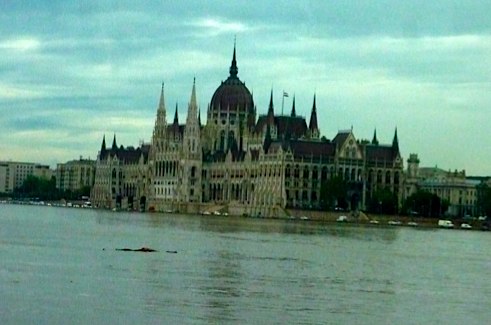
A log floating by the Hungarian Parliament, one of the largest in the world, over three football fields long and one field high. (The Hungarian Empire was much larger at the time it was built.) It is almost on the waterline at high water and is supported on Larch timbers from Russia, like the Cathedrals of Venice. When this wood is sealed away from oxygen, it becomes harder than rock.

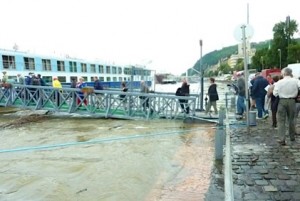
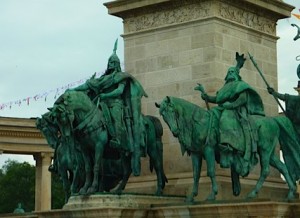
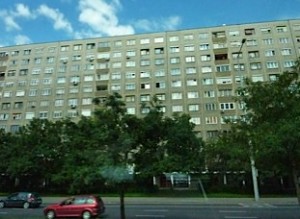
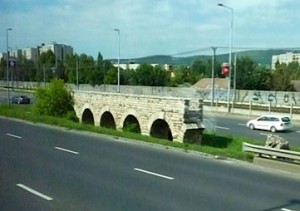
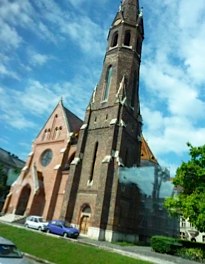
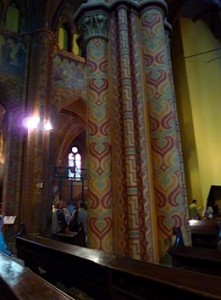


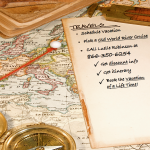
 We will never share your email and respect your privacy
We will never share your email and respect your privacy